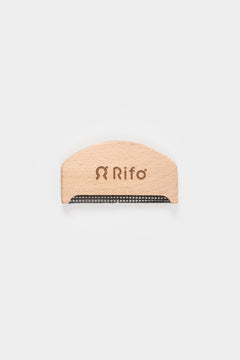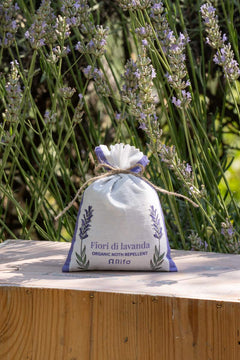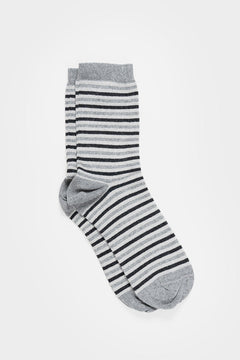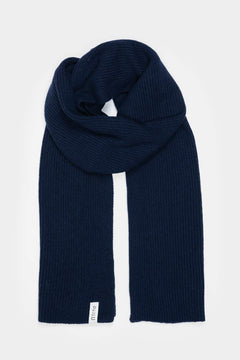Do you know how much plastic you wear every day? You might not think about it, but most of your wardrobe is made of synthetic materials. According to the Textile Exchange Materials Market Report 2024, 64% of the world’s textile fibers are synthetic, and 57% of them are polyester.
Convenient and ubiquitous: polyester is the most produced and consumed fiber in the world. It has taken over fashion, especially in the fast-fashion industry. But behind its apparent practicality hides a huge environmental and social cost.
Since we decided to gradually eliminate polyester from our production, we’re often asked: “Why is polyester a problem?” After all, it’s vegan and inexpensive. So why not use polyester, maybe recycled? Here are our reasons.
Polyester: What It Is and Why It’s So Common

Polyester is a synthetic fabric derived from petroleum — in other words, plastic. It was developed in the mid-20th century, when the American company DuPont (the same that invented Nylon) purchased the rights to mass-produce polyester and launched it under a new commercial name: Dacron®.
Since then, it has become the textile industry’s favorite material.
Why do brands use it so much?
- It’s cheap to produce
- It’s durable and easy to wash
- It’s easy to process and dye
That’s why polyester fabric is the symbol of fast fashion: it allows for low-cost, high-volume clothing production. For example, polyester yarn costs around €1–1.5 per kg, while cotton costs €2.5–3 per kg.
Why Polyester Is Harmful to Health and the Planet
1) Fossil Origin and High-Impact Production
Polyester is literally plastic — PET, the same material used for plastic bottles. It comes from petroleum, a non-renewable resource. That alone gives you an idea of how harmful its production is. But its impact also stems from the huge energy use and CO₂ emissions required to produce it — far higher than for natural fibers like cotton or wool.
2) Waste and Circularity: A Non-Biodegradable Fiber That Hinders Recycling
What happens when we no longer want polyester in our wardrobes? A polyester garment can take hundreds of years to break down — it’s not biodegradable. Meanwhile, textile waste keeps growing fast: in Italy, each person produces about 25 kg of textile waste every year.
And what about recycled polyester? rPET — recycled polyester — has an environmental impact 30–60% lower than virgin polyester, but it’s still far more polluting than natural fiber recycling. It requires energy-intensive chemical processes, such as melting plastics like PET to extrude new fibers.
Moreover, polyester’s dominance in fashion reduces circularity. When blended with natural fibers like cotton or wool, it makes mechanical recycling difficult, since it requires pure fiber compositions.
3) Washing Polyester = Microplastic Pollution

Here’s the most well-known issue: every time you wash a synthetic garment, thousands of invisible microplastics are released. These microplastics from clothes end up in wastewater and eventually in the ocean, harming marine ecosystems. You can reduce this by using washing bags that capture microplastics, but that’s only a partial solution.
4) Skin Health and Breathability
Polyester isn’t just an environmental issue — it’s also a personal one. Being non-breathable, polyester fabric causes heavy sweating. While easy to wash, it needs to be washed more often than natural fibers, leading to more microplastic release and higher energy use.
Natural fibers like wool or cotton allow heat and moisture to escape, offering greater comfort and fewer odors — you can simply air them out instead of washing frequently.
Moreover, low-cost polyester garments often contain harsh chemical residues (dyes, anti-mold agents, fixatives) that can cause irritation or polyester allergies.
How to Eliminate Polyester: Our Plastic-Free Fleece
We’ve always believed in challenges and circular alternatives to what already exists. That’s why we decided to create a truly sustainable alternative to polyester — a garment that didn’t exist before: Margaret and Richard, our 100% wool fleece, 80% of which is recycled. Here are its key benefits:
- No synthetic fibers = no microplastics in the wash
- Completely biodegradable, breathable, and warm
- Requires fewer washes — simply air it out to remove odors
- Made from recycled fibers, drastically reducing its impact thanks to color-sorted textile recycling
- Locally produced in Tuscany, from fiber to finished garment

The success of our sustainable fleece — with over 400 pre-orders just two months after launch — proves that a slower, more responsible fashion model is possible, especially when it meets a real market demand.
Even when it requires more care from consumers.
Even when it means waiting longer for a pre-ordered production that avoids waste.









